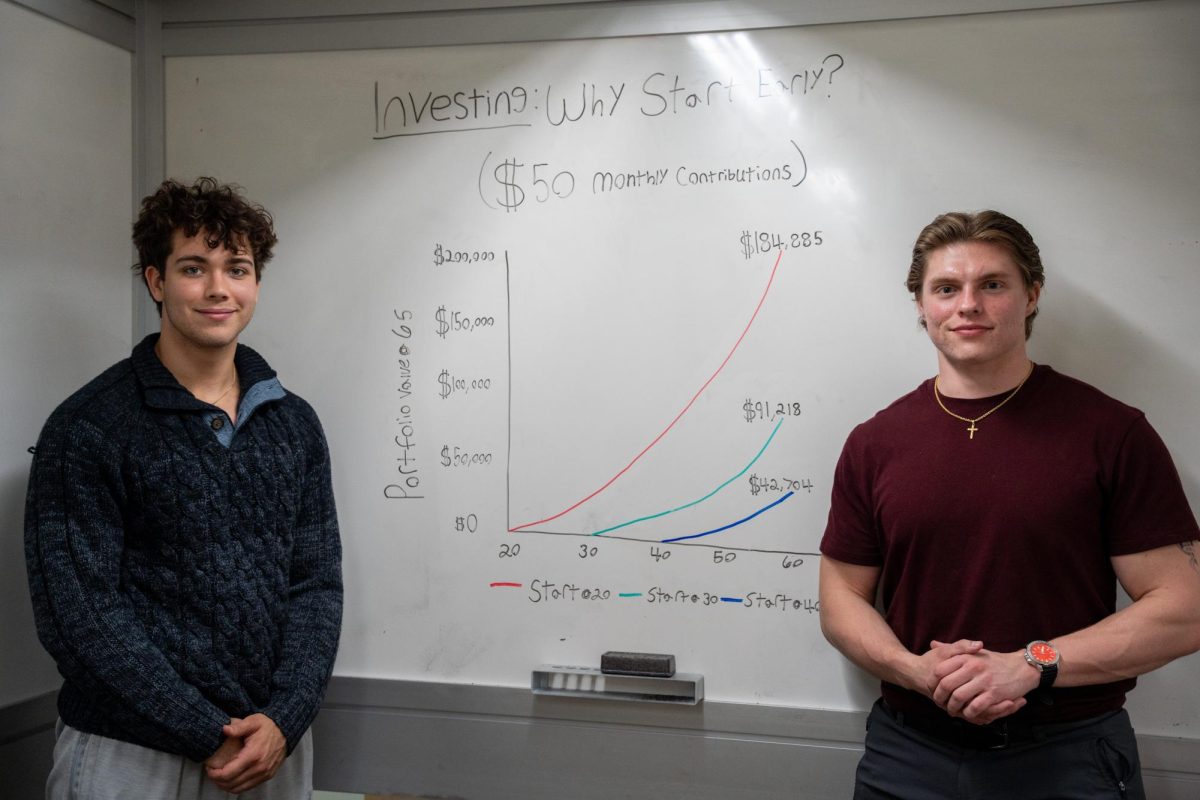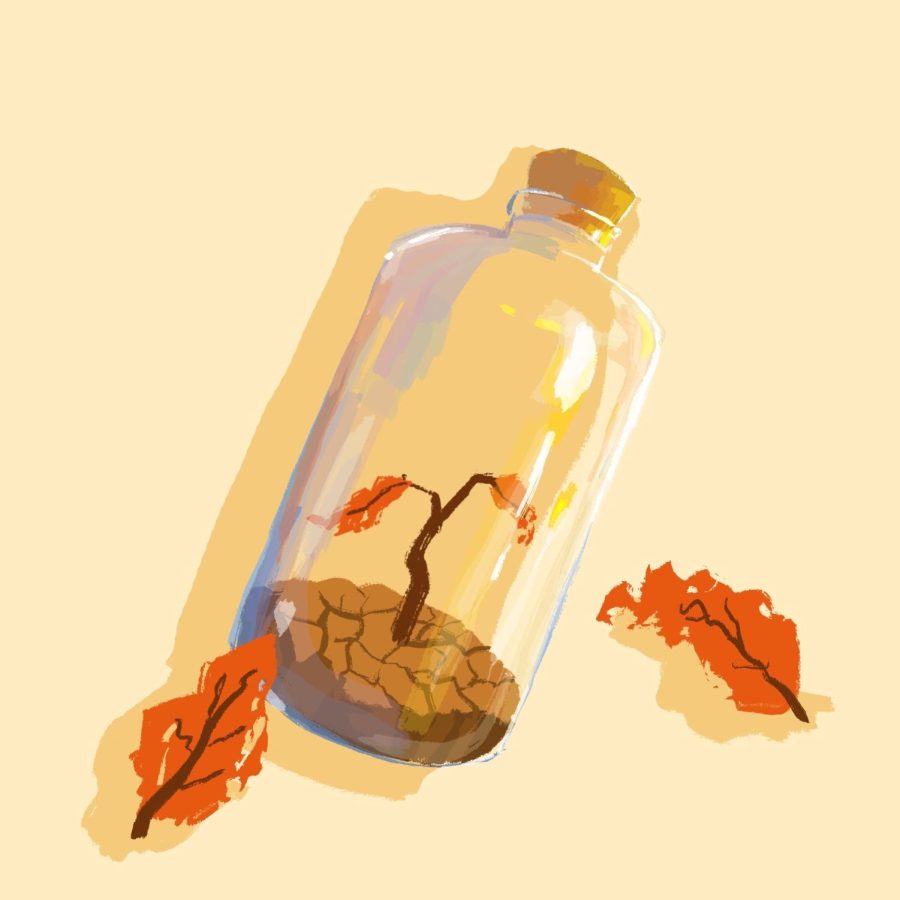Despite recent rainfall, Iowa drought continues to deplete Grinnell waterways
September 26, 2022
According to the U.S. Drought Monitor, which is updated every Thursday, 75 of 99 counties in Iowa are experiencing some level of drought. As of Sept. 15, 2022, Poweshiek County and much of southern Iowa are experiencing moderate to severe drought, which has decreased agricultural production across the state.
Despite two recent thunderstorms on Sept. 10 and 17, Grinnell has received less rainfall than normal in this summer and early fall. As of Sept. 21, this season has experienced a total of 18.24 inches of rain, lower than the average of 35 inches of rain in southeast Iowa, according to data from the National Oceanic and Atmospheric Administration (NOAA). While droughts have occurred for centuries, recent changes in climate have made droughts more pervasive, and they may continue to intensify in the future, according to NOAA.
Loss of Wildlife
At the Conard Environmental Research Center (CERA), 365 acres of reconstructed prairie land owned by Grinnell College, the unexpected rainstorm on the Sept. 10 resulted in around 50 to 100 dead fish along the shore of man-made, 10-acre Perry Pond.
During a kayaking event hosted by the Center for Prairie Studies (CPS) at CERA on Sept. 10, CERA Manager and CPS Outreach Coordinator Emily Klein and CERA horticulturalist Jacob Hill said there was between four to five feet of exposed shoreline. According to Klein, these water levels in Perry Pond and CERA are lower than they typically would be at this time of year.
Though the fish experienced many stressors that led to mass deaths, Klein said the drought condition was “a major contributing factor.”
On the following Monday, Klein and Hill said they contacted the Iowa Department of Natural Resources (DNR) to investigate why there were many dead fish on the shore. Klein and Hill said they had suspicions that chemicals may have washed into the pond due to the rain. The DNR tested the water and found low pH levels, indicating acidity, and low dissolved oxygen levels. Klein said representatives at the DNR said these were common occurrences during this time of year during a drought. The representative said smaller ponds and farm ponds tend to experience this more, according to Klein.
Because of the low water levels, low pH, low oxygen and low temperature from the storm, some fish at CERA died. Klein noticed it was mature largemouth bass of around 12 to 15 inches and mature sunfish of around six to seven inches who were impacted the most.
After this event, shorebirds and scavengers populated the pond shoreline to feast on the fish.
“That’s one great thing about native prairies is they have a built in resilience and resistance to changes in your normal ups and downs of weather in this region,” said Klein. “Whereas other plants that have been brought in that are not native to this area feel the effects a lot more.”
While CERA has not had to adjust their land management too much, Klein said they needed to give more attention to how they were using their watering.
New approaches to a changing climate
General Manager of the Grinnell College Golf Course (GCGC) Shane Hart, who has served in this position since the course’s opening in 2016, worked in a team of three with Facilities Management (FM) to cut down on irrigation.
The course has historically not had to purchase external water sources for pond and irrigation purposes. They have been able to continue this practice by only maintaining 85% of the course.
On Aug. 11, 2022, the GCGC released a statement to address how the course is navigating this drought period. Rather than maintaining an irrigation system that pumps out water to all acres of the course from 9 p.m. to 5 a.m. everyday, the course has cut back on fairway and tee box watering and instead focused on watering the greens.
The GCGC collects the water they use to run from northern Grinnell’s storm water runoff, which is north of 10th Avenue (close to the Bear Recreation and Athletic Center) and east of Interstate 146. The water from these streets runs into the gutters, which leads to the course’s two man-made ponds near the 1st and 9th putting stations.
Though the course does not measure exact water levels for the ponds, Hart estimates that the average pond depth is around seven to ten feet, and the ponds were down a third of those levels, at least until the recent thunderstorm on Sept. 17.
Before this storm, the ponds’s water levels exposed the culverts, or open drains, but the levels now reach the brim of the culverts. Overflow from the ponds goes to Sugar Creek in northern Grinnell. The 56-acre golf course, one of the largest parks in Grinnell, serves as a green space for the community.
“We just happen to be able to not provide the playing conditions that we want, but we realize this is mainly a recreational activity,” said Hart. “This is not of dire importance compared to those other people that are trying to provide food.”
But for farmers Ann Brau, who is on the board for the CPS, and her partner Lisle Dunham, the situation is more dire, Brau said. The pair have operated their farm Compass Plants for 23 years. They have two locations — one acre in their home on the edge of Grinnell and four acres in Poweshiek County’s Sheridan township.
Brau estimates the ideal amount of rain to receive during this season would be around 35 inches, and the town is currently at an approximate 17-inch deficit of this.
Brau said that this drought condition did not begin this year but rather is “a continuation of a drought that’s approaching three years long.” While the recent rain relieved land and production temporarily, Brau reported seeing two-inch wide cracks in the ground, indicating weakening roots and dry soil.
“With climate changing, our seasons have changed,” she said.
The drought condition has delayed Compass Plants’ normal seasons. In the spring, they would reliably harvest crops in April, but the colder temperatures during that time in recent years has prevented germination. Some summer crops, like tomatoes and sweet corn, may be planted a month later than usual. In this season, Brau said that they could not plant some fall crops in July and August, or they could not plant them at all.
The couple had to rely on private water from the Poweshiek Water Association. In their off-season, the water bill for both their home and their farmland would be around $35, but their last water bill was around $170. In a normal year, Brau said that they would not need to irrigate. They tried to use cisterns to collect rainwater to use in the absence of rainfall.
Brau describes Compass Plants as “micro” compared to other farms in the county, but she said that there are universal questions each farmer has to ask themselves during a drought.
“They’re going to be making decisions on which crops to save … because of water,” she said. “How much to water? How frequent to water? How much labor they can afford to do that? And how much of a decrease in production are they willing to take before they start watering or continue watering?”



















































